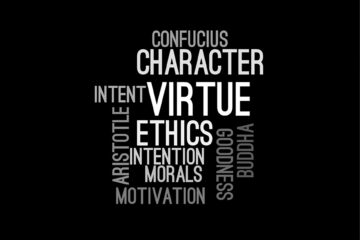![]()
Introduction
The term ‘property’ comes from the Latin word ‘properietate’ and its French equivalent ‘proprius,’ which both imply ‘owned object.’ The terms “property” and “ownership” often go hand in hand. Property cannot exist without ownership, and ownership cannot exist without property. The term “property” is widely used to describe what is owned. In other words, property refers to objects where one’s right of ownership can be enlarged. Both living and non-living entities are included in the definition of property. Although property might have many diverse meanings, the right of ownership is a common thread that runs through them all.
Property, in its widest sense, refers to all of a person’s legal rights, regardless of its description. In law, a man’s property is everything he has. Property, in a narrower definition, refers to a person’s proprietary rights rather than his personal rights. Personal rights make up his status or personal and condition, whereas proprietary rights make up his estate or property. Property, in another meaning, refers to only those rights that are both proprietary and real. [1]
Types of Properties
There are mainly two different types of properties, Corporeal properties and Incorporeal properties.
Corporeal Properties
The right to own material things is known as corporeal property. The existence of corporeal property is always visible and tangible. The senses can detect corporeal property. It is visible and touchable. The right of ownership of a material thing is the general, permanent and inheritable right of the user of the property or thing. [2]
Corporeal property can be further classified into the following
- Movable and immovable property
- Real and Personal property[3]
Movable and immovable property
- Movable corporeal property- properties which can be moved from one place to another are movable property. For example, vehicles, ornaments, electronics etc
- Immovable corporeal property- properties which cannot be moved from one place to another are immovable properties. “Immovable property” is defined as “land, profits emanating from the land, and items attached to the earth,” according to the General Clauses Act of 1897. For example, land, buildings, houses.
Real and Personal property
- Real corporeal property- The real property includes all rights over land with such additions and exceptions, as the law has deemed fit.
- Personal corporeal property- The law of personal property includes all other proprietary rights whether they are in rem or in personam.
Incorporeal Properties
Incorporeal properties consists of all the intangible properties like trademarks, copyrights, patents etc. It encompasses all valued interests that are or could be protected by legislation. Incorporeal property also known as intellectual or conventional property. It cannot be perceived by senses. Incorporeal property can be further classified into two:
- Jura in re Propria
- Jura in re Aliena
Jura in re propria: It is the ownership over the immaterial things which pertains to a person’s thoughts, inventions, skill, and labour. For example, patents, copyright, goodwill etc. This allows a person to have full right over his intangible property.
Jura in re Aliena: These are rights in rem over property that belongs to someone else. These rights run concurrently with res encumbered. They link the res to anybody it may go to. Examples of some encumbrances are lease, servitude, securities, trusts etc. Encumbrances restrict the owner’s ability to exercise certain specific rights over his property.[4][5]
Modes of Acquisition of Property
There are four different ways to acquire property according to Salmond, which are possession, prescription, agreement, and inheritance.
- Possession: The objective realisation of ownership is a possession. Possession refers to having physical control over something or someone. It serves as prima facie proof of ownership. The property that belongs to no one, Res nullius, belongs to the first possessor of it, and he receives a legal title to it against the rest of the world. When a property that is already in the possession of someone else is obtained through possession, the possessor receives a good title against all third parties save the genuine owner. Even if the true owner is present, the possessor is permitted to keep possession until removed in accordance with the law. In a case of adverse possession, there are two owners: one has absolute and perfect ownership, while the other has relative and imperfect ownership, which is commonly referred to as possessory ownership due to its origin possession. [6]
- Prescription: According to Salmond: “Prescription may be defined as the effect of lapse of time in creating and destroying rights; it is the operation of time as a vestitive fact.” Prescriptions are of two kinds-Positive or acquisitive prescription and negative or extinctive prescription.
- Positive or Acquisitive Prescription- Positive prescription refers to the acquisition of a property right via the passage of time. For example, right of way is acquired by continued de facto use of it, undisputedly and openly for a period prescribed by law. Under Indian Easement Act, this period is 20 years.
- Negative or Extinctive Prescription- Negative prescription occurs when a person’s right is destroyed due to the passage of time. This happens when a person’s right already exists. For example, after a certain amount of time, the right to sue for non-payment of a debt is lost.[7]
- Agreement: Property can also be acquired through a legally binding agreement. The owner of a property can transfer his property rights to another person with or without consideration. When something is given for money, it is a “sale”, and when something is given for free it is considered as a “gift”. It is one of the most significant legal doctrines, founded on the maxim “Nemo dat quad habet legime,” which states that no one can, in general, convey a better title than he has. An agreement, according to Paton, is a communication by two or more people to each other of a common purpose to change the legal relationship between them. For an agreement to be valid the following conditions must be fulfilled:
- There should be two or more parties.
- Mutual consent of the parties.
- It should be communicated.
- There should be common intention to communicate a legal relationship.[8]
- Inheritance: Inheritance is another method of getting property. Certain rights survive a person’s death and pass to his heirs and successors. Inheritable rights are those that a person can pass down to his or her descendants. Proprietary rights can be passed down through the generations. Personal rights, on the other hand, are normally not inheritable, however there are exceptions to this rule. A person’s property can be passed down either testate or intestate. It could be done with or without a will. In the absence of a will, succession occurs by operation of law. If no heirs are found, the property is given to the state.[9] [10]
Theories of Law of Properties
Jurists have proposed several theories to provide a better understanding and recognition of the law of property from time to time. Such theories are both in favour of and against property law. These theories are discussed below:
- Natural Theory: The Natural Law Theory is founded on the idea that the person who possesses the property is the person who owns the property. It stipulates that when an ownerless thing is possessed by someone, that person becomes the property’s owner. The reason for this is because the property was recognised by the law through its owner. The precedence of property ownership is given to the person who is in possession of the property, hence this notion is acknowledged by law. According to GROTIUS, everything had no owner at first, and whomever occupied it became the owner. According to BLACKSTONE, the natural law hypothesis states that everybody who begins to use anything develops an interest in it, whether for a short time or for a long time. Some jurists have disputed this view as well; HENRY MAINE believes it is erroneous to believe that possession confers ownership of the property. BENTHAM claims that property is created by law, rather than by the occupation of an ownerless thing. He believes that property only exists when there is a legal system in place.[11]
- Labour Theory: According to this theory, the individual who utilised his skills and labour to create an object is the rightful owner of that object because it is the outcome of his efforts. This theory holds that property can be claimed only on the basis of one’s work, which created that property. It acknowledges the importance of labour for adequate remuneration. SPENCER agreed with this viewpoint. He believes that property is the outcome of an individual’s labour, and that one who has not put up any effort to produce it cannot acquire it. Harold Laski, on the other hand, has criticised this viewpoint, claiming that labour does not produce property and is merely a method of acquiring property. This theory is also known as “positive theory”.[12]
- Metaphysical Theory: KANT and HEGEL were the proponents of this hypothesis. Both of them supported the hypothesis, but it was not accepted because it is unrelated to reality. Kant explains that a thing legally belongs to someone, if he is connected to it in such a way that when someone else uses it without permission, it causes injury to the owner as well. According to him, there is a physical relationship between the owner and the thing in this theory. Property, according to Hegel, is the objective manifestation of an individual’s personality. To put it another way, property is an object over which a person has the authority to exercise his will. To put it another way, property is the object over which a person has the freedom to exercise his will. Kant has supported and justified the metaphysical notion of property, arguing that it exists and needs to be protected. He pointed out that the law of property does not simply strive to safeguard ownership where there is a physical relation between the possessor and the thing, but that it goes beyond and considers the individual’s personal will to be more essential in the concept of property. This idea has been criticised for being unconcerned with reality and focused solely on theoretical assumptions.[13]
- Historical Theory: This theory discusses the gradual and steady emergence of private property. BENTHAM proposed this notion, which was backed up by HENRY MAINE. Property development involves three distinct stages.
- First Stage: It states that people have a predisposition to take things in natural ownership and exercise them regardless of state laws.
- Second Stage: This establishes juristic possession, which entails both possession in fact and as well as in law.
- Third Stage: This is based on the legal recognition of property ownership. The law ensures that the property owner has sole ownership and control over the property.[14]
- Psychological Theory: This theory states that, property was created as a result of human beings’ acquisitive nature. Everyone wants to be the owner of something and have control over it. This theory of property is backed by Bentham, who points out that property is entirely a mental construct. It’s nothing more than a wish to gain particular benefits from the object based on one’s abilities. Roscoe Pound agrees with Bentham and believes that the sole basis of the concept of property is an individual’s acquisitive impulse, which drives him to assert his claim to goods in his possession and control. This hypothesis has been criticised for being Maine’s imaginative reconstruction based on Indian village societies and some local behaviours prevalent in ancient Indian villages, and hence lacking universal applicability.
- Functional Theory: Property is viewed as a social interest in the functional theory, as it promotes general security and protects individual interests in personality, domestic connections, and subsistence. As Roscoe Pound points out, human values such as privacy, honour, and reputation can only be satisfied through some form of property access. Laski is a proponent of the functional theory of property as well. Property, he observes, is a social fact like any other, and it is the nature of social facts to change. As a result, property has taken on a variety of forms and is subject to change as societal standards shift.[15][16]
Conclusion
Property is the possession of a person who acquired it via his or her own hard labour, succession, or agreement. Property can be divided into two categories: proprietary rights and personal rights. Every person is entitled to both personal and proprietary rights. Various notable jurists discuss the term property in Jurisprudence. Some jurists are in favour of the property notion, while others are against it. In jurisprudence, the concept of property is particularly important as it provides a description of other proprietary rights based on the property, jurisprudence also gives a discussion of other proprietary rights based on the property.
References:
[1] Vidya Dhar Mahajan, Jurisprudence and legal theory (5 ed. 2010).
[2] Id
[3] Anusha Vijayvargiya, Laws of property under jurisprudence Legal Bites – Law And Beyond (2020), https://www.legalbites.in/property-laws-jurisprudence/ (last visited Sep 2, 2021).
[4] The concept of Property: Jurisprudence, StrictlyLegal (2020), https://strictlylegal.in/the-concept-of-property-jurisprudence/ (last visited Sep 2, 2021).
[5] Supra Note 1
[6] Supra note 4
[7] Diva Rai, Laws of property under jurisprudence iPleaders (2020), https://blog.ipleaders.in/laws-of-property-under-jurisprudence/ (last visited Sep 2, 2021).
[8] Supra note 3
[9] Akshat Agarwal, Concept of property and possession under jurisprudence Legal Desire (2020), https://legaldesire.com/concept-of-property-and-possession-under-jurisprudence/ (last visited Sep 2, 2021).
[10] Supra note 1
[11] Anusha Vijayvargiya, Laws of property under jurisprudence Legal Bites – Law And Beyond (2020), https://www.legalbites.in/property-laws-jurisprudence/ (last visited Sep 2, 2021).
[12] The concept of Property: Jurisprudence, StrictlyLegal (2020), https://strictlylegal.in/the-concept-of-property-jurisprudence/ (last visited Sep 2, 2021).
[13] Supra note 11
[14] Supra note 14
[15] Diva Rai, Laws of property under jurisprudence iPleaders (2020), https://blog.ipleaders.in/laws-of-property-under-jurisprudence/ (last visited Sep 2, 2021).
[16] Supra note 1



0 Comments